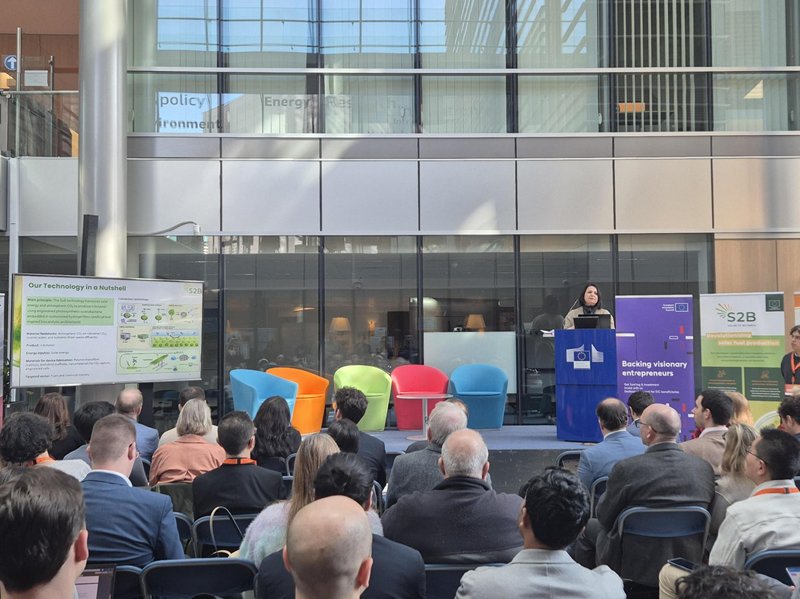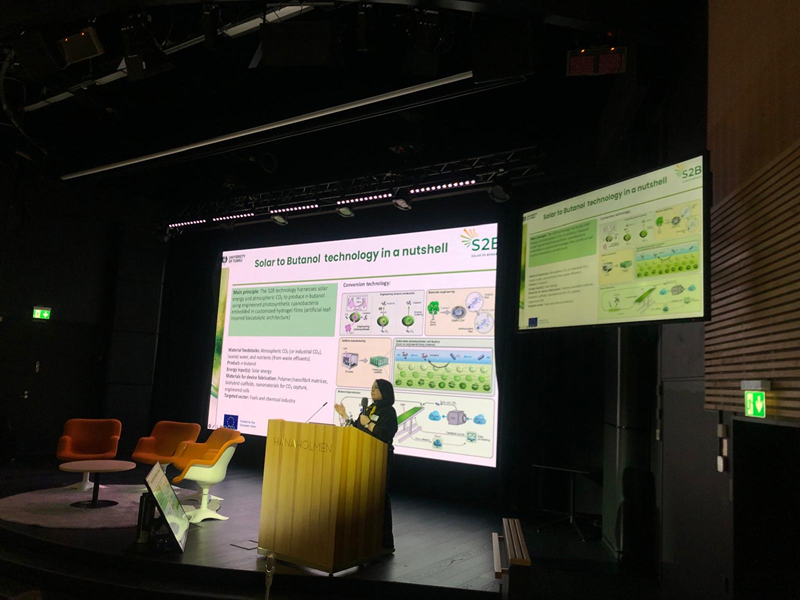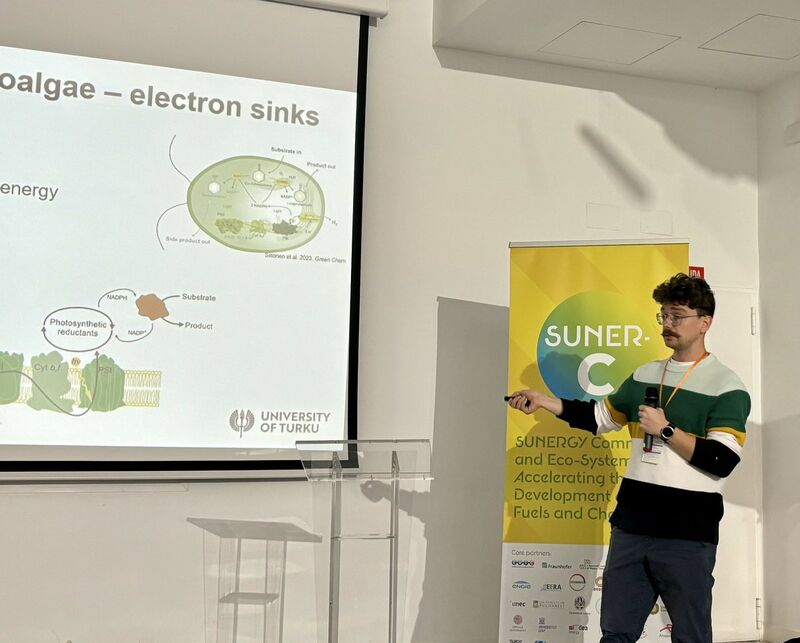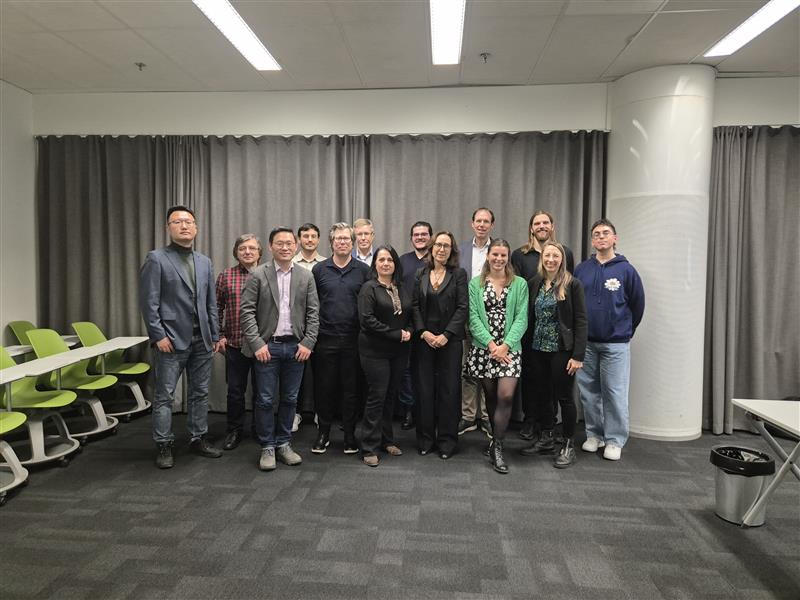The S2B project was pleased to co-organise and participate in the Joint EIC–SUNERGY Road mapping Event on Renewable Hydrogen, Fuels, and Chemicals, held in Brussels on March 26–27, 2025. The event gathered experts from academia, industry, and policy to address the key challenges and opportunities surrounding renewable hydrogen, fuels, and chemicals and co-develop the SUNERGY roadmap for a circular solar-driven economy for 2050.
Our coordinator, Yagut Allahverdiyeva-Rinne from Turun Yliopisto (UTU), presented S2B during the project spotlight session, alongside other cutting-edge EU-funded initiatives such as:
- SOLDAC,
- TURN2X,
- Mi-Hy,
- DAM4CO2. As part of the roadmaping session, she also oversees the “biological conversion” topic.
It was also a great opportunity to reinforce collaboration with our sister project, SUN-PERFORM, and to position S2B within the broader European Union innovation ecosystem for solar-to-fuel technologies.
Key Insights from the Event:
The Pivotal Role of Molecules in Energy and Industry
Jan Mertens, Chief Science Officer at ENGIE Research, presented three key pathways for advancing energy systems:
- Enhancing efficiency and circularity;
- Increasing electrification to optimize energy use;
- Leveraging bio-based or electricity-based molecules for aviation, shipping, and energy storage.
S2B contributes directly to this vision by promoting a novel solid-state architecture for solar-driven biocatalysis, enabling the continuous production of butanol—a sustainable fuel alternative.
Carbon Capture and Utilization (CCU) as a Cornerstone for EU Climate Neutrality
A dedicated session emphasized CCU’s role in the EU’s climate strategy. The recognition of CO₂ as a valuable resource and its inclusion in net-zero directives like FEFuelEU were key discussion points.
S2B aligns with this movement by integrating CO₂ capture and utilization directly into its biocatalytic production system, reinforcing its potential to contribute to net-zero goals.
A dedicated roundtable on CCU emphasized:
- Flexibility in value chains to adapt to market and regulatory changes;
- Stronger policy frameworks to incentivize CO₂ valorization;
- Industry-led investments to improve CO₂ capture and purification processes;
- Standardized methodologies for integrating CCU across sectors.
Key enablers innovation
Four main enables have been presented and discussed:
- Need of harmonized and transparent Life Cycle Assessments methodologies and the early integration of sustainability indicators, by Miet Van Diel, strongly echoes the methodologies developed within S2B;
- Need to empower young scientists through stable funding and structured career paths, by Vera Grimm (German Ministry of Research & Innovation)This directly supports S2B’s ambition to train at least 7 PhDs across academic and non-academic sectors;
- Need to create and support networks of innovation that support infrastructure, as seen with “BlueChem”, the first incubator dedicated to sustainable chemistry in Belgium, presented by Lisbet Boogaerts (BlueChem;
- Reinforce public-private partnerships to drive innovation. Claudiu Pavel from the Clean Hydrogen Partnership outlined the importance of aligning research agendas with industrial needs. The S2B project embodies this collaboration, integrating biotechnological advancements with industrially relevant fuel production pathways.
Startup Perspectives and the Innovation Ecosystem
Startup showcases (e.g. eChemicles, Matteco, IONYSIS) brought to light key technical and financial challenges in hydrogen production and CO₂ valorization. Their solutions offered inspiration for building resilient, circular value chains—a core ambition of our project.
Conclusion
EIC-SUNERGY event underscored the urgent need for scalable, sustainable fuel solutions, aligning perfectly with S2B’s mission.
By integrating synthetic biology, material engineering, and process innovation, S2B is poised to contribute significantly to Europe’s renewable energy landscape.
The project’s participation in this event not only facilitated crucial knowledge exchange but also reinforced its potential as a disruptive force in sustainable fuel production.
The S2B – Solar-to-Butanol is pioneering a paradigm shift in direct solar fuel production by employing a solid-state photosynthetic biocatalyst system. S2B’s innovations include:
- Entrapping photosynthetic cyanobacteria in a robust polymer/nanofibril matrix to enable continuous biobutanol production;
- Enhancing light harvesting and CO₂ capture to maximize efficiency;
- Integrating Direct Air Capture (DAC) and nutrient recovery from waste streams to ensure sustainability.
Butanol is a strategic fuel alternative due to its high energy density and versatile applications in aviation, the chemical industry, and various industrial processes. S2B’s approach eliminates reliance on food-based biomass sources, setting a new benchmark for biofuel production.
Next steps
The discussions and insights gathered will feed into S2B’s upcoming activities, particularly in the areas of technology assessment, policy alignment, and capacity building.
Related resources (i.e. event report from EIC-SUNERGY) will come later




